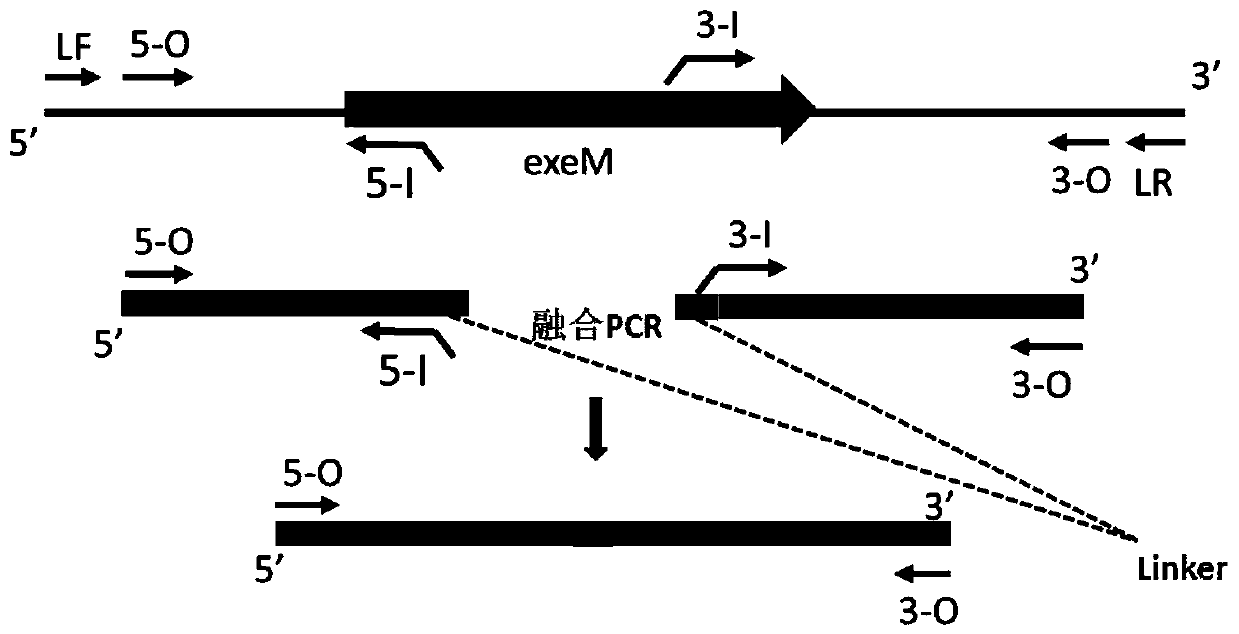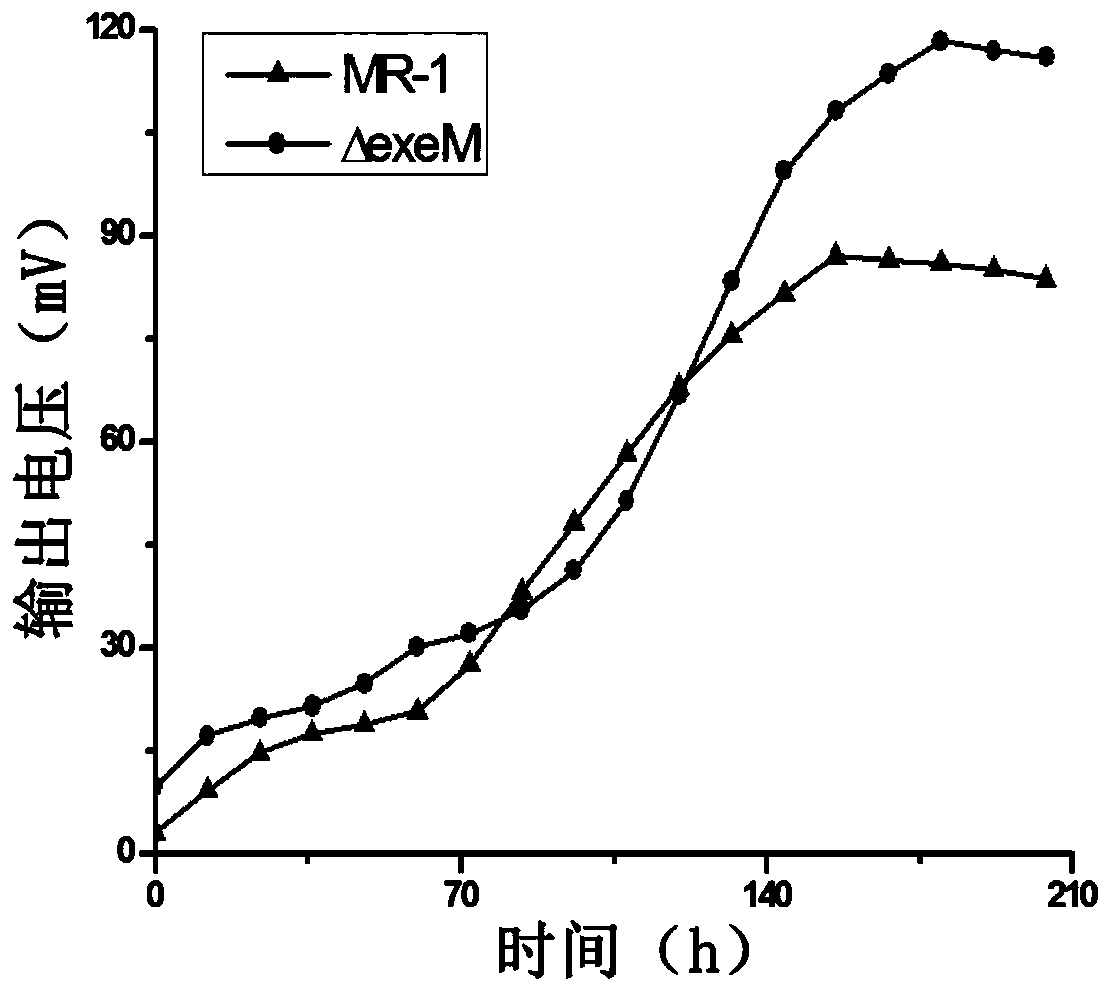Electricity-generating Shewanella engineering strain, construction method and application
A technology of engineering strains and construction methods, applied in chemical instruments and methods, microorganism-based methods, biochemical equipment and methods, etc., can solve the problems of inability to form thicker biofilms and weak adhesion of MR-1 cells, Achieve the effect of enhancing extracellular electron transfer and increasing power density
- Summary
- Abstract
- Description
- Claims
- Application Information
AI Technical Summary
Problems solved by technology
Method used
Image
Examples
Embodiment 1
[0021] A method for constructing an engineering strain of electric-producing Shewanella, comprising the steps of: knocking out the target gene exeM of wild-type Shewanella MR-1 to obtain an engineering strain of electric-producing Shewanella ΔexeM, and the nucleoside of the gene exeM The acid sequence is represented by SEQ ID NO 15.
[0022] The specific construction method includes the following steps:
[0023] The wild-type Shewanella MR-1 target gene exeM was knocked out by att site-specific recombination and double crossover deletion.
[0024] (1) Primer design and gene amplification:
[0025] The genome sequence of Shewanella MR-1 was obtained from the NCBI database, and three pairs of primers were designed according to the target gene exeM and its upstream and downstream gene sequences, exeM-LF (SEQ ID NO.4) and exeM-LR (SEQ ID NO.5 ), exeM-5-O (SEQ ID NO.6) and exeM-5-I (SEQ ID NO.7), exeM-3-O (SEQ ID NO.8) and exeM-3-I (SEQ ID NO. 9) Amplify the upstream homologous ...
Embodiment 2
[0048] Example 2: Electricity production by engineering strain ΔexeM of Shewanella and wild-type Shewanella MR-1MFC
[0049] 1. Strain activation
[0050]The electrogenic Shewanella engineering strain ΔexeM and the wild-type Shewanella MR-1 were taken out from the -80°C refrigerator, and cultured overnight in LB medium at 30°C and 200 rpm respectively. The overnight culture solution was transferred into new LB medium at a ratio of 1% at 30°C, 200rpm, cultured for 10 hours, measured OD 600, calculated volume (OD 600 in MFC = 0.5), centrifuged at 5000rpm for 10 minutes, and used anolyte After resuspension, add to the MFC anode compartment.
[0051] 2. MFC power generation
PUM
 Login to View More
Login to View More Abstract
Description
Claims
Application Information
 Login to View More
Login to View More - R&D
- Intellectual Property
- Life Sciences
- Materials
- Tech Scout
- Unparalleled Data Quality
- Higher Quality Content
- 60% Fewer Hallucinations
Browse by: Latest US Patents, China's latest patents, Technical Efficacy Thesaurus, Application Domain, Technology Topic, Popular Technical Reports.
© 2025 PatSnap. All rights reserved.Legal|Privacy policy|Modern Slavery Act Transparency Statement|Sitemap|About US| Contact US: help@patsnap.com



